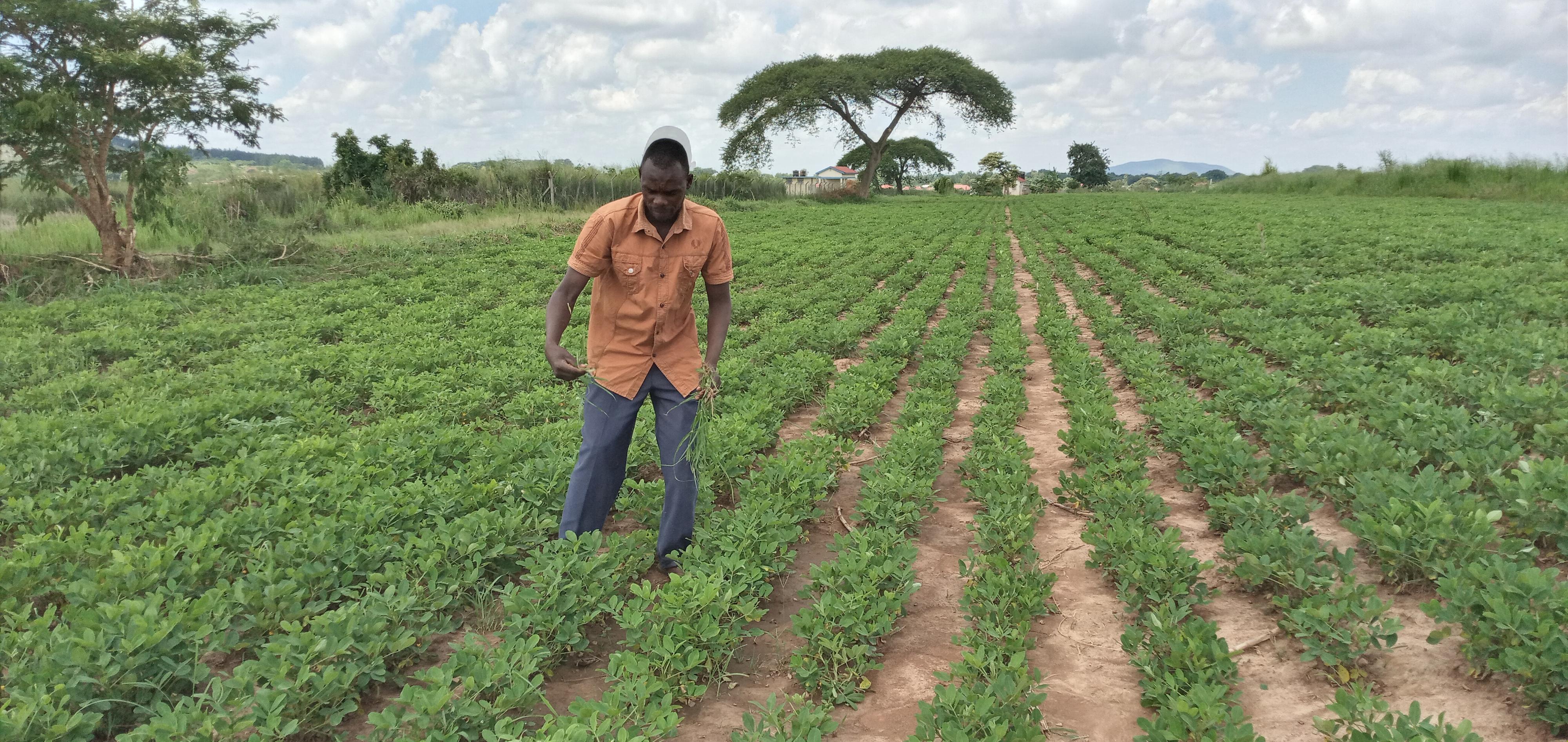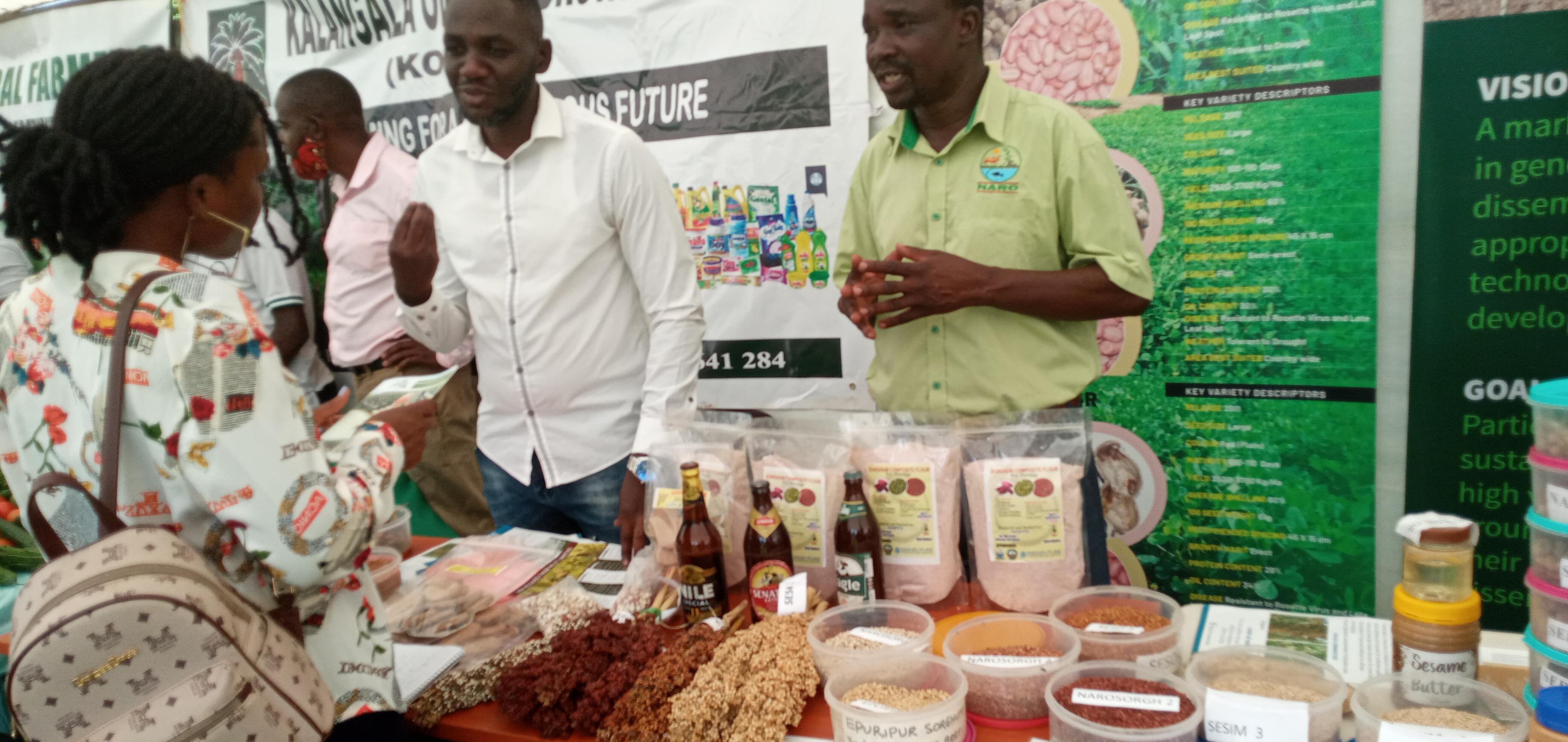Prime
Scientists breed new cereals

A farmer weeds a groundnut garden. PHOTO/LOMINDA AFEDRARU
What you need to know:
- Seso I is tolerant to drought, it is high yielding and has a long shelve life coupled with good aroma.
- Seso II is preferred by local brewers who use it for making traditional brews and it is early maturing while Seso III is suitable for brewing, it’s good for feed and has good micro nutrients which is preferred in schools for the children.
A well-functioning seed system is key to timely access to low cost and quality seed by farmers. Improved varieties are critical to increase grain production in terms of both quality and quantity.
Hence, decision-makers in agriculture face the challenge of developing an integrated and cost-effective seed system that can generate and deliver improved seed varieties to farmers.
This is to ensure seed security and enhancing livelihoods particularly of the dryland farmers. This is the thinking of scientists from the National Agricultural Semi-Arid Resources Research Institute (NaSARRI) breeding crops to suit the interest of farmers in the drylands and semi-arid regions.
Background
The current status of Uganda’s seed value chain for grain legumes and dryland cereals is faced with challenges since most seed companies are not engaged in multiplication of seed of these crops for onward use by the farmers.
As such scientists from NaSARRI have now teamed up with experts from the International Maize and Wheat Improvement Centre (CIMMTY) which is one of the centres of the Consortium of International Agriculture Research Centres (CGIAR) to come up with ways of strengthening the seed system in a bid to reach out to farmers.
The crops to be dealt with under a two year project include finger millet, sorghum and groundnuts.
Project implementation
The scientists at NaSARRI with stakeholders involved in the seed value chain of the crops have been in a week long engagement in a bid to identify the desired attributes of the three crops suitable for the farmers and processors in order to come up with seed that will be beneficial to the end users.
This therefore calls for the seed generated to be processed by the farmers which calls for the two year project which is looking at strengthening the seed system for crops in dry land areas.
The aim is to move produced seed which are on the shelves at the research Institutes to farmers as well as to create a network of experts in seed value of the three crops not only in Uganda but the entire East and Central Africa.
The director of NaSARRI Dr Michael Ugen says there is need to enhance the seed of the three crops of choice in a bid to reach out to farmers.
He contends that NaSARRI has developed a number of varieties of sorghum, groundnuts and finger millet but seed companies are not multiplying them for uptake.
Dr Ugen notes that production of seed is not the same as growing crops for grain and a lot of procedures have to be followed.
Seed attributes
The scientists and stakeholders dealing in the three selected crop varieties discussed and came up with attributes and other characteristics desired by the farmer and processors.
Sorghum
Dr Scovia Adikini, the programme leader, dry land cereals has advised seed companies to periodically breed seed for use by farmers ahead of a new planting season. The preferred famer and consumer varieties are Seso I, Seso II and Seso III because of their colour and goodness for food.
The scientists say Seso I is tolerant to drought, it is high yielding and has a long shelve life coupled with good aroma. Seso II is preferred by local brewers who use it for making traditional brews and it is early maturing while Seso III is suitable for brewing, it’s good for feed and has good micro nutrients which is preferred in schools for the children.
Millet
The team identified the challenge of farmers taking up improved millet varieties due to lack of awareness because the seed system is lacking.
The scientists recommend Naromill 1, 2, 3, 4, 5 varieties for seed system improvement. This is because they are high yielding, drought-tolerant, the seed has uniformity and the colour is light which is preferred by consumers.
Naro mill 1 is tolerant to blast, Naro mill2 has big grains, Naro mill 3 is a good tiller and its flour is good for confectionery industries, Naro mill4 is early-maturing and Naro mill 5 is high-yielding and tolerant to drought
All the varieties are good for nutrition because they contain Iron and Zinc content.
Groundnuts
Dr David Kalule Okello, the legumes programme leader and ground breeder with his team attribute low farmer uptake of the improved varieties to lack of awareness about the same and the need to strengthen ground nut seed system.
He notes that seed producers expect early-maturing, high-yielding and tasty groundnut varieties which are tolerant to pests and diseases while processors prefer varieties which are sweet in peanut butter and have good flavour while aggregators are particular about the seed weight.
Therefore the recommended varieties for seed production include Serenut 1R which has sweet taste, Red Beauty which is early maturing, easy to shell and has more seeds per pod.
Others are Serenut 8R which is drought tolerant, has long shelve life, high yielding, has uniformity in colour and big seeded. Serenut 9T is big seeded and heavy as well as high yielding while Serenut 6T is easy to harvest , has high oil content and Serenut 14R is the most liked by farmers because it has all the attributes in the rest of the varieties.




